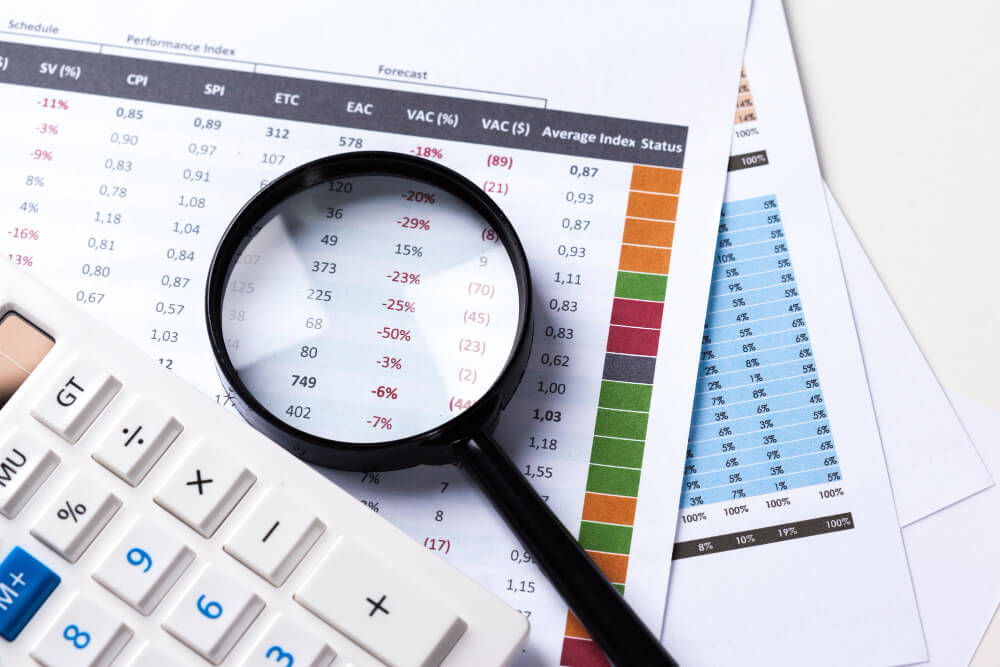What you will See in a Business General Ledger ??

What you will See in a Business General Ledger ??
One of the most important tools for predicting your company’s financial health is its general ledger. However, your company may suffer if you’re behind on your general ledger entries.
So… how’s your small business general ledger lookin’? Does it require some affection? If so, keep reading to find out everything there is to know about the general ledger, including its definition, the many kinds of accounts it contains, and more.
What is General Ledger?
The base of your accounting system is your company general ledger. Your ledger is a document that you use to organize and compile your transactions.
It is your responsibility to enter debits and credits into your ledger. Your business ledger’s credits and debits must always be in balance. Inaccurate financial reporting and an impact on your company’s financial accounts can result from unbalanced credits and debits.
Your chart of accounts (COA) provides the accounts in a general ledger. Your company’s COA assigns a category to each of your transactions.
Small business Ledger has these following accounts:
- Assets
- Liabilities
- Equity
- Revenue
- Expenses
- Assets
Whatever things that increase the value of the small business are called as assets. Assets can be tangible(physical) and non-tangible (non-physical).Property,vehicles,trademarks and patents are just few examples of assets your businesses might have.
- Liabilities
Existing debt that your company owes is known as liabilities. Liabilities typically include money owed to a government agency, employee, vendor, business, or group. Liabilities include things like mortgages, loans, and accumulated costs.
- Equity
The quantity of ownership you possess in your business is known as equity, sometimes known as net assets, net value, or owner’s equity. Equity can be computed by deducting all your liabilities from all of your assets.
- Revenue
The total amount of money your company makes in a certain time frame is called revenue. Operating revenue is derived from primary corporate operations and activities, such sales. Non-operating revenue refers to the money you can make from ventures unrelated to your firm, like building rentals.
- Expenses
These are costs associated with business operations. You likely have a variety of business expenses, including fees, equipment, supplies, rent, and utilities.
General ledger sub-accounts
Your general ledger entries’ supporting information is provided by sub-accounts, often known as sub-ledgers. You can further segment your accounts using sub-accounts to see the precise locations of the incoming and outgoing monies. Under every primary account, there are subaccounts.
- Asset Sub-Accounts
- Checking
- Savings
- Petty Cash
- Inventory
- Account Receivable
- Expense Sub-Accounts
- Insurance
- Rent
- Equipment
- Supplies
- Cost of goods sold
- Liability Sub-Accounts
- Payroll tax liabilities
- Sales Tax
- Accounts Payable
- Equity Sub-Accounts
- Owner’s Equity
- Common Stock
- Retained Earnings
- Revenue sub-Accounts
- Owner’s Equity
- Common Stock
- Retained Earnings
- Creating a general Ledger :
You have several choices for entering your transactions when making a general ledger. One may:
- Create a general ledger on paper
- Use a spreadsheet
- Get Accounting Software
The size of your firm determines the size of your general ledger. Because you may have fewer transactions, a smaller business may have fewer accounts and sub-accounts.
General Ledger in a company is needed for several important reasons, all of which support accurate reporting, efficient financial administration, and strategic planning. The importance of general ledger is:
-
1. Financial Reporting
The primary source of generating the balance sheet ,income statement and cash flow .These financial statements provide snapshots of the financial health of the business.
All the financial records of the business need to be recorded accurately ,efficiently enabling the production of precise financial reports. -
2. Audit Trial
A Detailed record of all transactions which is essential for tracing and verifying the authenticity of the financial transactions.
The general ledgers helps in the complying with the legal and regulatory requirement and it is an evidence created by the accounts for the audits and reviews. -
3. Internal Control
The general ledger is the primary source where any errors can be identified in financial transactions by maintaining a systematic record .It is a factor in making sure that that all transactions are documented and reviewed and acts as a deterrent to fraudulent activities. -
4. Financial Analysis
The general ledger provides data so that business can be analyzed and financial performances ,like liquidity ,solvency can be judged over time .This aids the businesses in overseeing the financial trends and variances which would help in strategic and decision-making planning. -
5. Budgeting and Forecasting
Having an accurate and historical financial data is crucial for creating accurate budget and forecasts is also important for planning and allocating resources efficiently by providing a clear picture of past financial performance . -
6. Business Planning
Any further financial goals of a business and what strategies to develop can only be done based on actual reliable financial data.
Accurate financial data also improves operational efficiency by identifying cost-saving opportunities and areas where financial attention is needed -
7. Stakeholder Communication
All the stakeholders involved in the business gets a transparent ,reliable as well as detailed financial information .It also builds confidence among investors ,creditors and other stakeholders by demonstrating sound financial management and integrity. -
8. Legal and Tax Compliance
Keeping an updated General Ledger ensures that the business adheres to all accounting standards and therefore all legal issues and penalties can be avoided.
It also facilitates accurate and efficient tax preparations by providing comprehensive record of all financial transactions.
The general ledgers is the most important document for maintaining the financial integrity of the business. It ensures accurate, up-to-date record keeping ,support compliance and audit requirements, enhancing financial analysis, and underpins strategic business decisions .This document is considered the backbone of any business which helps to achieve financial transparency ,operational efficiency and sustained growth.
Recent Post
Want to know how we can support your business?
